Levi trots into the classroom from recess with a group of friends
as Hayli Thomas explains how much he helped a few years back when she was
recovering from brain surgery — everything from working on reading skills to
sitting together at lunch.
“Having a friend like Levi is great,” says the Willett
Elementary School sixth-grader. “Levi listens. He doesn’t tell you what to do
or how to talk.”
As English language arts teacher Leslie Allen resumes class,
Levi hops up onto a set of desks and surveys the room, tail wagging slightly as
four hands quietly stroke and scratch his soft coat. Without a doubt the most
beloved student in the class, Levi is an Australian shepherd — a therapy dog —
whose talents go far beyond being cute and furry.
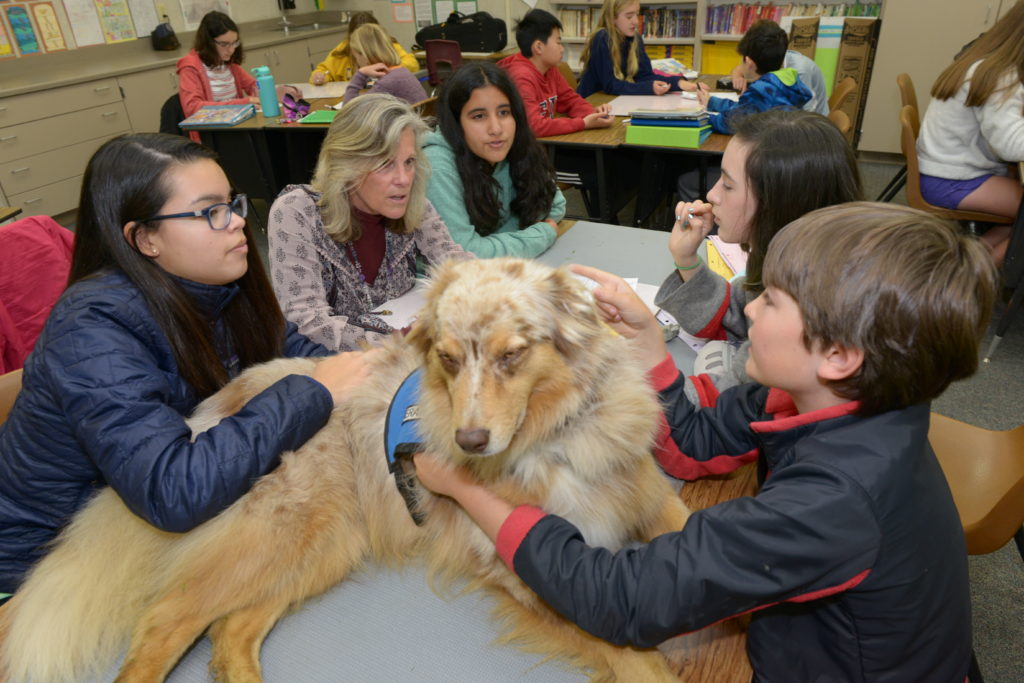
“He works in math, he works in reading, he does
social-emotional learning, and he works with kids in crisis,” says Allen, a
member of the Davis Teachers Association (DTA). “He is unique in the therapy
dog world, because he is trained to work with all people, not just one person.”
Little hands extend for a quick pet as Levi meanders around
the room, stopping occasionally to give a little extra affection where needed.
He seems to have a knack for finding the students who could use a friend at
that very moment. For five years, Levi has been an integral part of Allen’s
classroom, listening to students read, reducing anxiety, brightening bad days
and providing comfort.
A 25-year educator, Allen first brought a dog into a
classroom environment 10 years ago, when she was working as a math specialist
in an after-school program and realized her students were so much more engaged
when their math assignments involved a furry friend. The students would play
with the dog and then calculate how fast or how far he ran. By the end of the
year, every student in the program improved their math skills by one grade
level, and two students moved up two grade levels. Allen was convinced about
the power of a therapy dog in her classroom.
“I think there’s a lot we haven’t discovered about why and
how this works,” she says.
Some of the science behind Levi’s magic is known, however.
Interacting with the pup lowers the level of cortisol (a stress hormone) in the
brain and raises levels of oxytocin and dopamine (“happy” hormones).
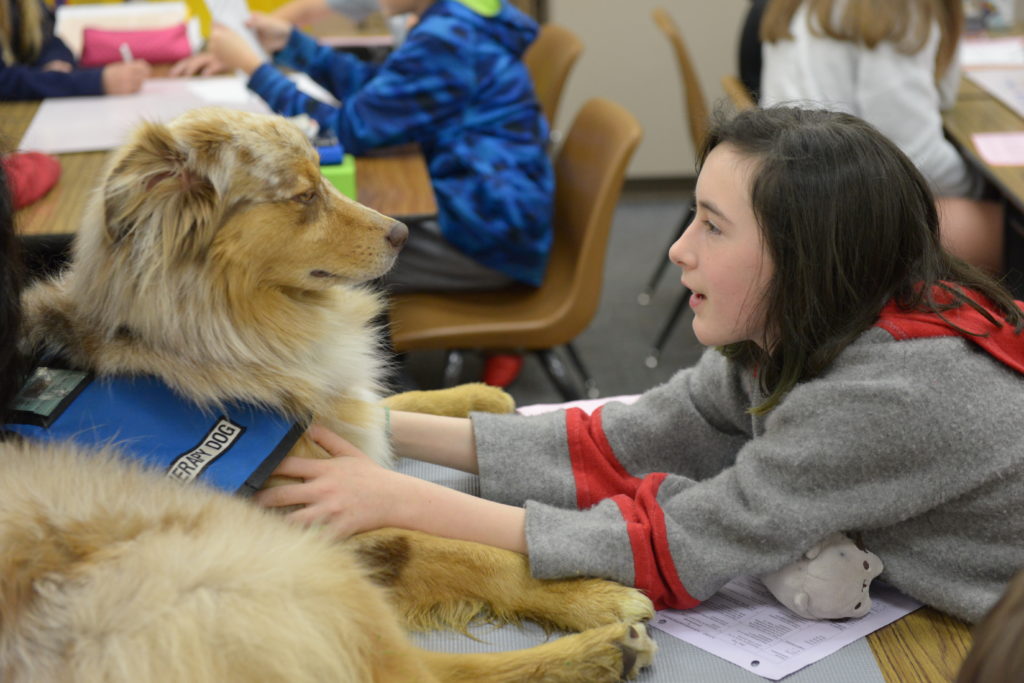
“When I’m stressed, it’s relaxing to be with Levi because I
can feel him telling me ‘You can do it,’” says sixth-grader Mia Udwary. “If
dogs were in every classroom, it would help lower stress levels and make kids
feel happier.”
Levi is not the only special pup in Davis Joint Unified
School District. Pam Snipes, a special education teacher at Oliver Wendell
Holmes Middle School, has two canines of her own, boxer Zippideedoodah (Zip,
for short) and cockapoo Mick Wagger. The 35-year teacher and DTA member hadn’t
brought therapy dogs into the classroom before coming to Davis in 2012 to work
with students who are emotionally disturbed. Snipes says her dynamic duo have a
special relationship with her students.
“It’s amazing to me how comforting they are,” Snipes says.
“Zip and Mickey seem to be the bridge between ‘I’m not talking to you’ and ‘OK,
I’m ready to talk now.’”
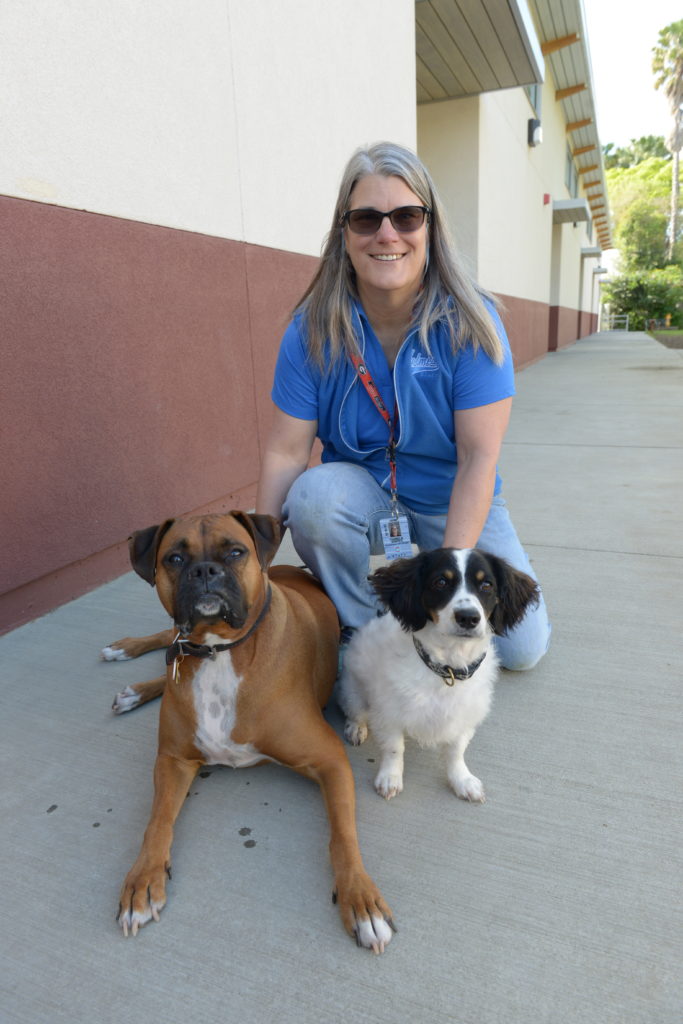
Zip has a special knack for comforting students and easing
stressful situations, and he loves running out some energy at lunchtime with
one of Snipes’ students who has severe ADHD. The licensed therapy dog was named
Student of the Month last year for his contributions to the school community.
The dogs are an important part of the school environment, so much so that even
when Snipes is away, her paraeducators pick up Zip and Mick from her home to
bring them to class.
And it’s not only the students who benefit. Every morning,
Snipes takes the dogs for a walk through the school’s front office, where the
staff are counting on their visit.
“It just makes our whole day. We’re always so happy to see
Zip and Mickey,” says counselor and DTA member Ellen Shields, as the dogs take
treats from her hand. “The impact on the school climate that these guys have
made is amazing.”
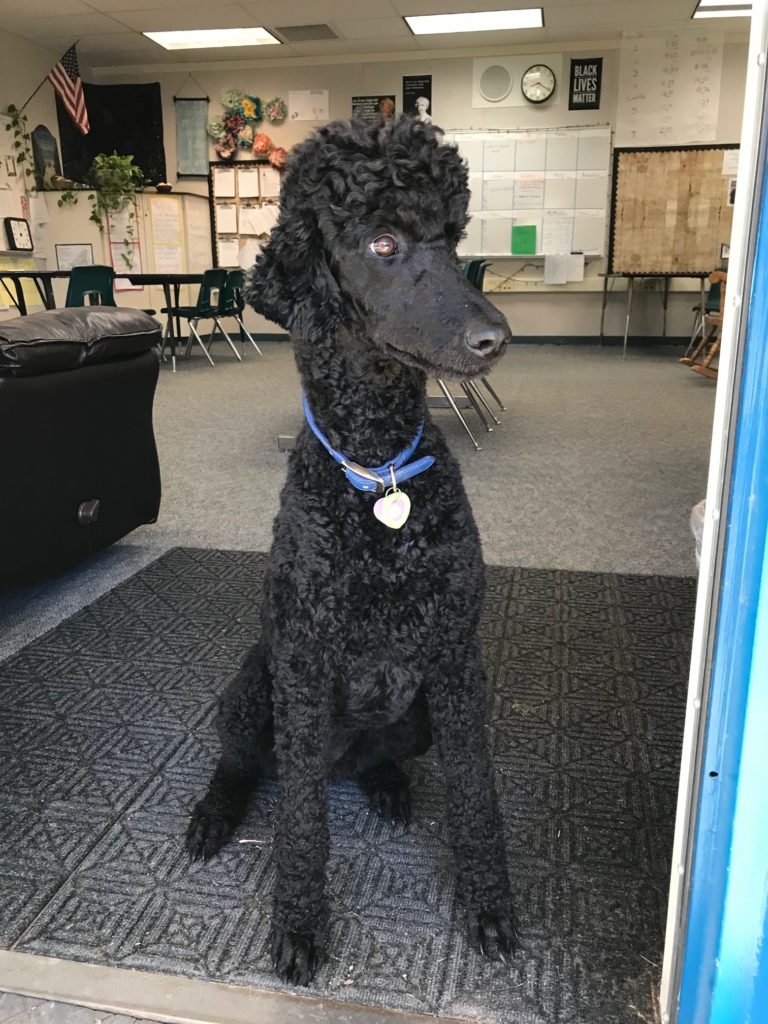
Holmes has one more dog with a big impact on students:
special education teacher Cori Schneider’s poodle Dorothy. Schneider, also a
DTA member, says there’s something special about the relationship between kids
and dogs. “The way Dorothy looks at students makes them feel seen, wanted and
loved, which is what you want for all students.”
While the benefits are striking, Allen cautions that
bringing therapy dogs into the classroom is a big responsibility. Not only do
they need the temperament and patience for six hours of eager, poking, prying
and not always gentle hands, Allen says, but helping people is their job. Just
like a teacher after a long day with students, Levi also needs some me time,
which means an hour of exercise before and after school.
“It takes a lot of work outside of class to let him get the
energy out,” Allen says. “He’s working all day. He needs his time.”
Right now, Levi is working on a short nap while lying on a
reading student’s lap. And it looks like neither could possibly be happier.
Joy in the Classroom
San Bernardino educator Fiorela Piedra had tried many strategies to help her students with social-emotional problems: mindfulness lessons, behavior charts, Positive Behavioral Intervention and Supports — you name it. Nothing seemed to help, until a three-legged dog named Joy came into her life and became an important part of her classroom.
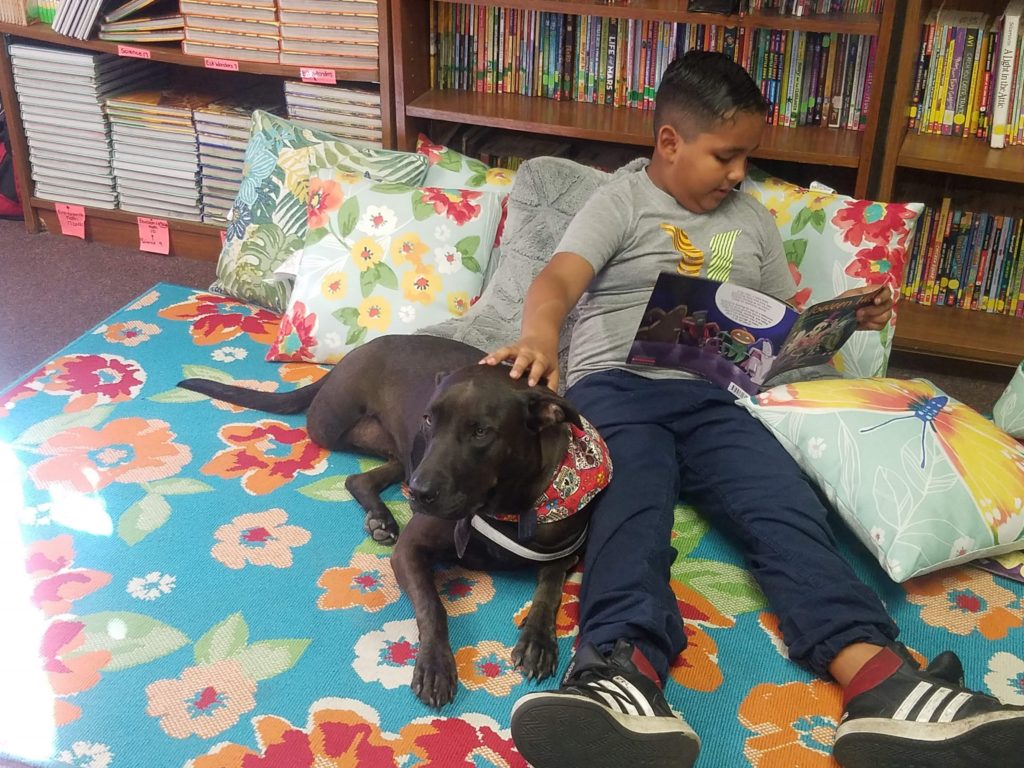
Joy’s journey from death’s door to therapy dog is its own
story. Piedra, a member of the San Bernardino Teachers Association, works with
a local rescue group called Cause for San Bernardino Paws. She agreed to foster
Joy, whose sunny disposition only 24 hours after losing a leg in a car accident
caused a change from her previous moniker, Sassy.
After fostering the chocolate Labrador/pit bull/golden
retriever mix for a month, Piedra gave Joy a forever home. Joy became a part of
Piedra’s classroom community a few weeks before her certification as a therapy
dog. Piedra’s students were having trouble with peer relationships, and Joy’s
arrival immediately brought a different energy to the classroom.
“Joy walked around the class to meet each student, stopping
by some students’ desks a little longer than others,” Piedra says. “What was
interesting was the ones she stayed longer at were kids who needed the extra
attention.”
Piedra says every student read to Joy that day, bringing a
much-needed calming energy to the classroom. Joy now visits Piedra’s class a
few days a week.
“I have to say that her presence has improved my class’s
behavior,” she says. “My discipline issues in the class are usually nonexistent
when Joy is here and about half what they used to be when she is not.”
Why Read With Dogs?
We asked Leslie Allen how reading to her therapy dog Levi makes a difference for her students.
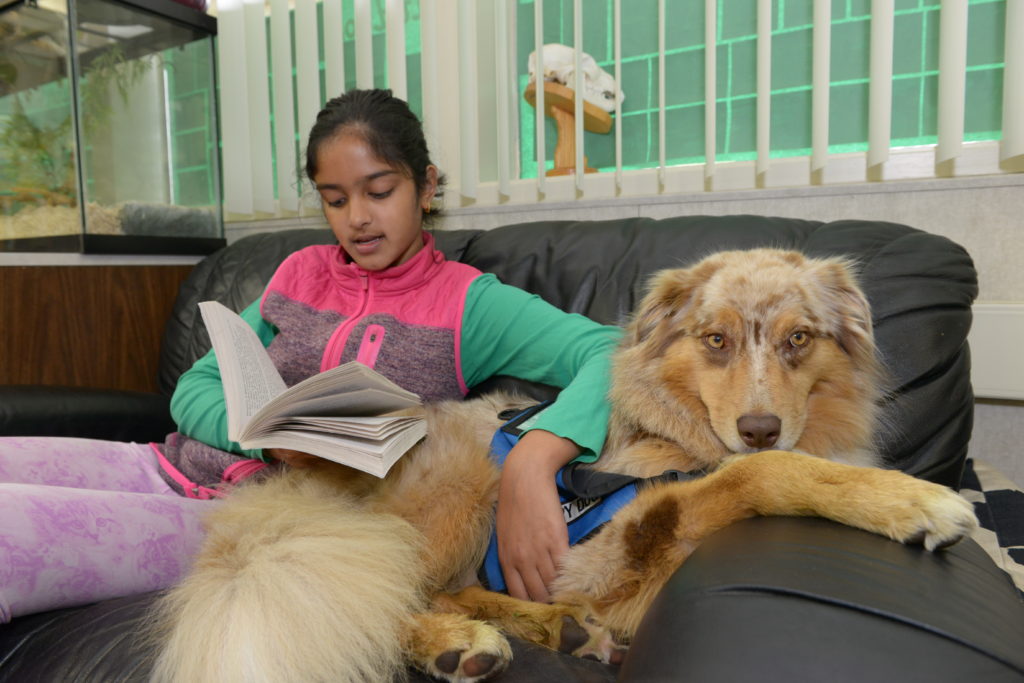
“Reading to Levi is interacting with a living thing. Kids
can sit down with the dog and read for 45 minutes without stopping. Working
dogs like shepherds make the best reading buddies because they’re not averse to
eye contact like most dogs. Adults know that dogs don’t need to look at us to
listen, but for kids it helps them know the dog is paying attention.
“The students always read out loud to Levi. When you read
out loud, your brain catches mistakes that would be missed if you were reading
silently. So, when they read out loud to Levi, they catch their mistakes and
their fluency goes up dramatically.”
Service Dogs Help Educators, Too
Everyone loves golden retrievers — it’s a scientific fact. And as Halle ambles around the State Council of Education meeting, the reaction of CTA leaders upon sight of her proves it.
But Halle is more than the fluffy, friendly unofficial
mascot of CTA State Council. She is a medical alert and response dog,
specifically trained to partner and work with educator Laura Finco, vice
president of the San Ramon Valley Education Association (SRVEA). While Halle is
keenly alert to Finco’s disability, she is also aware of and sensitive to those
around her, often approaching others who she detects are stressed, not feeling
well, or just in need of some unconditional love.
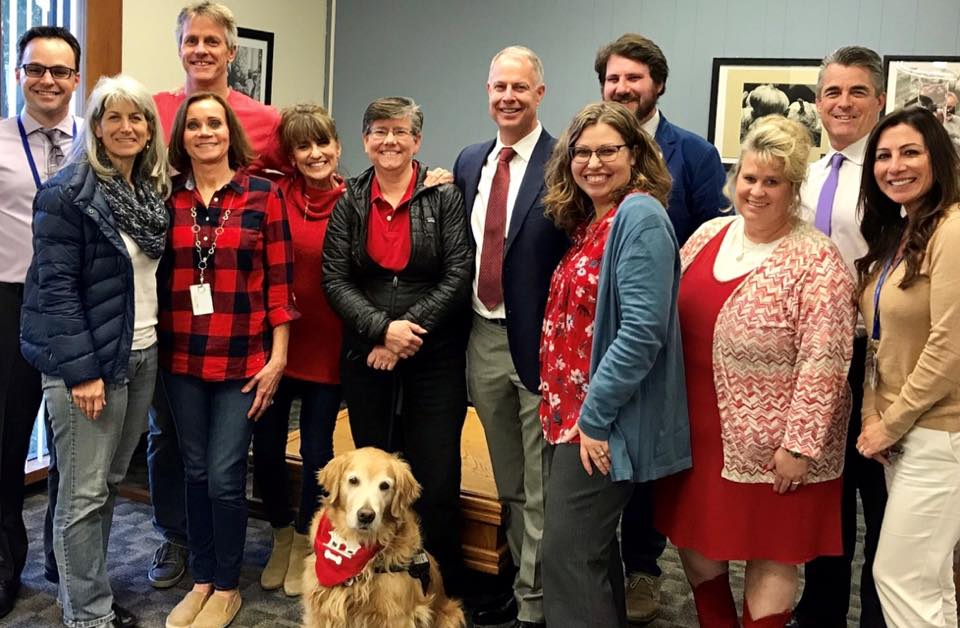
When Finco was working in a classroom every day, Halle was
busy changing lives in her own way. Halle once made friends with a chronically
absent student, who would come to first period class just to spend time with her
furry friend. The relationship changed the way the student felt about school,
and today she is a senior in high school headed for university.
Finco says Halle also had such a calming effect on a student
named Ishy that Ishy’s IEP (Individualized Education Program) had a provision
that he could visit Halle any time he needed.
“Halle is a magnet for students,” Finco says. “Just being
around her brings calm to a room.”
Without her service dog Shadow, art teacher and SRVEA member
Jennie Drummond might not be able to go outside because of her panic disorder.
Shadow is trained to check her heart rate and anxiety levels, and she responds
when Drummond exhibits anxiety symptoms.
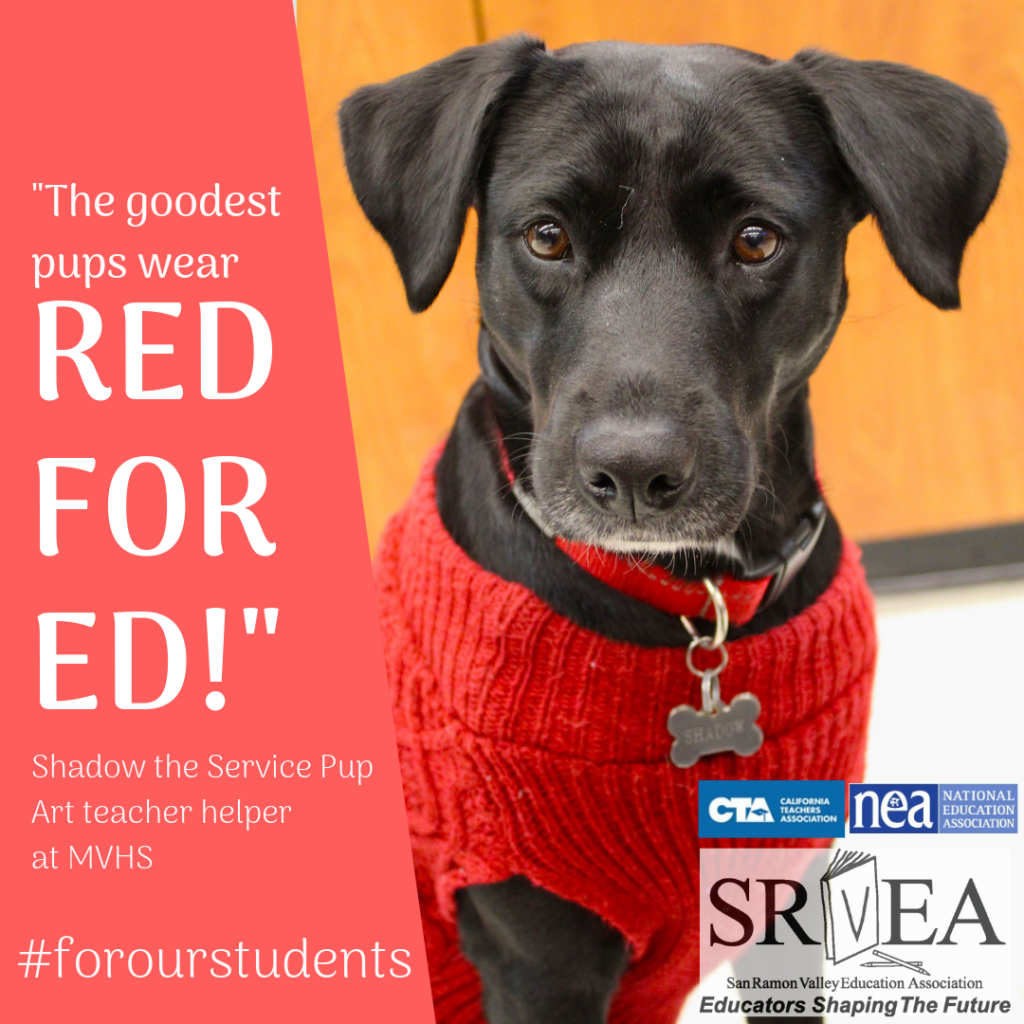
Drummond says that because her disabilities are not visible,
people often assume that Shadow is around for fun, despite her service vest and
badge.
“She’s a working pup who is trying to focus on helping me,”
Drummond says. “The biggest struggle has been students I do not know yet and
staff trying to pet her or distract her without my permission.”
Drummond says she doesn’t know what she’d do without her. “Before Shadow, being anywhere outside my home on my own was difficult, almost unbearable. With her, I feel like I can do almost anything, because I know I am taken care of in the event of a flare-up.”
The Discussion 0 comments Post a Comment